On February 12, 2002 at a Pentagon news conference, Secretary of Defense Donald Rumsfeld was asked by Jim Miklaszewski, the NBC Pentagon correspondent, if he had any evidence that Iraq had weapons of mass destruction and was supplying them to terrorists. Rumsfeld delivered a famous non-answer answer and said:
Reports that say that something hasn’t happened are always interesting to me, because as we know, there are known knowns; there are things we know we know. We also know there are known unknowns; that is to say we know there are some things we do not know. But there are also unknown unknowns — the ones we don’t know we don’t know.
When he was pressed by Jamie McIntyre, CNN’s Pentagon correspondent, to answer the question about evidence, he continued to talk gobbledygook, saying, “I could have said that the absence of evidence is not evidence of absence, or vice versa.”
He never said he had evidence, because he didn’t.
Rumsfeld, who enjoyed his verbal games, was the quintessential bullshitter and liar for the warfare state. This encounter took place when Rumsfeld and his coconspirators were promoting lie after lie about the attacks of September 11, 2001 and conflating false stories about an alliance between Saddam Hussein and Osama bin Laden in order to build a case to wage another war against Iraq, in order to supplement the one in Afghanistan and the war on “terror” that they launched post September 11 and the subsequently linked anthrax attacks.
A year later on February 5, 2003, U. S. Secretary of State Colin Powell went before the U. N. Security Council and in a command performance assured the world that the U.S. had solid evidence that Iraq had “weapons of mass destruction,” repeating that phrase seventeen times as he held up a stage prop vial of anthrax to make his point. He said, “My colleagues, every statement I make today is backed up by sources — solid sources. These are not assertions. What we’re giving you are facts and conclusions based on solid intelligence.” He was lying, but to this very day his defenders falsely claim he was the victim of an “intelligence failure,” a typical deceitful excuse along with “it was a mistake.” Of course, Iraq did not have “weapons of mass destruction” and the savage war waged on Iraq was not a mistake.
Scott Ritter, the former Marine U.N. weapons inspector, made it very clear back then that there was no evidence that Iraq had weapons of mass destruction, but his expertise was dismissed, just as his current analysis of the war in Ukraine is. See his recent tweet about Senator Diane Feinstein in this regard:
Thirteen months after Rumsfeld’s exchange in the news conference, the United States invaded Iraq on March 19, 2003, knowing it had no justification. It was a war of aggression. Millions died as a result. And none of the killers have been prosecuted for their massive war crimes. The war was not launched on mistaken evidence; it was premeditated and based on lies easy to see. Very, very easy to see.
On January 28, 2003, eleven days before Powell performance, I, an independent writer, wrote a newspaper Op Ed, “The War Hoax,” saying:
The Bush administration has a problem: How to start a war without having a justifiable reason for one. No doubt they are working hard to solve this urgent problem. If they can’t find a justification, they may have to create one. Or perhaps they will find what they have already created. . . . Yet once again, the American people are being played for fools, by the government and the media. The open secret, the insider’s fact, is that the United States plans to attack Iraq in the near future. The administration knows this, the media knows it, but the Bush scenario, written many months ago, is to act as if it weren’t so, to act as if a peaceful solution were being seriously considered. . . . Don’t buy it.
Only one very small regional Massachusetts newspaper, the North Adams Transcript, was willing to publish the piece.
I mention this because I think it has been very obvious for a very long time that the evidence for United States’ crimes of all sorts has been available to anyone who wished to face the truth. It does not take great expertise, just an eye for the obvious and the willingness to do a little homework. Despite this, I have noticed that journalists and writers on the left have continued to admit that they were beguiled by people such as Bill and Hillary Clinton, Barack Obama, and Joseph Biden, con men all. I do not mean writers for the mainstream press, but those considered oppositional. Many have, for reasons only they can answer, put hope in these obvious charlatans, and some prominent ones have refused to analyze such matters as the JFK assassination, September 11th, or Covid-19, to name a few issues. Was it because they considered these politicians and matters known unknowns, even when the writing was on the wall?
Those on the right have rolled with Reagan, the Bushes, and Trump in a similar manner, albeit for different reasons. It causes me to shake my head in amazement. When will people learn? How long does it take to realize that all these people are part of a vast criminal enterprise that has been continuously waging wars and lying while raking in vast spoils for the military-industrial complex. There is one party in the U.S. – the War Party.
If you have lived long enough, as have I, you reach a point when you have, through study and the accumulation of evidence, arrived at a long list of known knowns. So with a backhand slap to Donald Rumsfeld, that long serving servant of the U.S. war machine, I will list a very partial number of my known knowns in chronological order. Each could be greatly expanded. There is an abundance of easily available evidence for all of them – nothing secret – but one needs to have the will for truth and do one’s homework. All of these known knowns are the result of U.S. deep state conspiracies and lies, aided and abetted by the lies of mass corporate media.
My Known Knowns:
- The U.S. national security state led by the CIA assassinated President John F. Kennedy on November 22, 1963. This is The foundational event for everything that has followed. It set the tone and sent the message that deep state forces will do anything to wage their wars at home and abroad. They killed JFK because he was ending the war against Vietnam, the Cold War, and the nuclear arms race.
- Those same forces assassinated Malcolm X fourteen months later on February 21, 1965 because he too had become a champion of peace, human rights, and racial justice with his budding alliance with Rev. Martin Luther King, Jr. Such an alliance of these two black leaders posed too great a threat to the racist warfare state. This conspiracy was carried out by the Nation of Islam, the New York Police Department, and U.S. intelligence agencies.
- The Indonesian government’s slaughter of more than one million mainly poor rice farmers in 1965-6 was the result of a scheme planned by ex-CIA Director Allen Dulles, whom JFK had fired. It was connected to Dulles’s role in the assassination of JFK, the CIA-engineered coup against Indonesian President Sukarno, his replacement by the dictator Suharto, and his mass slaughter ten years later, starting in December 1975. The American-installed Indonesian dictator Suharto, after meeting with Henry Kissinger and President Ford and receiving their approval, would slaughter hundreds of thousands East-Timorese with American-supplied weapons in a repeat of the slaughter of more than a million Indonesians in 1965.
- In June of 1967, Israel, a purported ally of the U.S., attacked and destroyed the Egyptian and Syrian armies, claiming falsely that Egypt was about to attack Israel. This was a lie that was later admitted by former Israeli Prime Minister Menachem Begin in a speech he gave in 1982 in Washington, D.C. Israel annexed the West Bank and Gaza and still occupies the Golan Heights as well. In June 1967, Israel also attacked and tried to sink the U.S. intelligence gathering ship the U.S. Liberty, killing 34 U.S. sailors and wounding 170 others. Washington covered up these intentional murders to protect Israel.
- On April 4, 1968, these same intelligence forces led by the FBI, assassinated Martin Luther King, Jr. in Memphis, Tennessee. He was not shot by James Earl Ray, the officially alleged assassin, but by a hit man who was part of another intricate government conspiracy. King was killed because of his work for racial and human rights and justice, his opposition to the Vietnam War, and his push for economic justice with the Poor People’s Campaign.
- Two months later, Senator Robert F. Kennedy, on his way to the presidency, was also assassinated by deep state intelligence forces in another vastly intricate conspiracy. He was not killed by Sirhan Sirhan, who was a hypnotized patsy standing in front of RFK. He was assassinated by a CIA hit man who was standing behind him and shot him from close range. RFK, also, was assassinated because he was intent on ending the war against Vietnam, bringing racial and economic justice to the country, and pursuing the assassins of his brother John.
- The escalation of the war against Vietnam by Pres. Lyndon Johnson was based on the Tonkin Gulf lies. Its savage waging by Richard Nixon for eight years was based on endless lies. These men were war criminals of the highest order. Nixon’s 1968 election was facilitated by the “October Surprise” when South Vietnam withdrew from peace negotiations to end the war. This was secretly arranged by Nixon and his intermediaries.
- The well-known Watergate scandal story, as told by Woodward and Bernstein of The Washington Post, that led to Richard Nixon’s resignation in August 1974, is an entertaining fiction concealing intelligence operations.
- Another October Surprise was arranged for the 1980 presidential election. It was linked to the subsequent Iran-Contra scandal during the Reagan administration, led by future CIA Director under Reagan, William Casey, and former CIA Director and Vice-President under Reagan, George H. W. Bush. As in 1968, a secret deal was made to secure the Republican’s election by making a deal with Iran to withhold releasing the American hostages they held until after the election. They were released minutes after Reagan was sworn in on January 20, 1981. American presidential elections have been fraught with scandals, as in 2000 when George W. Bush and team stole the election from Democrat Al Gore, and Russia-gate was conjured up by the Democrats in 2016 to try to prevent Trump’s election.
- The Reagan administration, together with the CIA, armed the so-called “Contras” to wage war against the Sandinista government of Nicaragua that had overthrown the vicious U.S. supported dictator Anastasio Somoza. The Contras were Somoza supporters and part of a long line of terrorists that the U.S. had used throughout Latin America where they supported dictators and death squads to squelch democratic movements. Such state terrorism was of a piece with the September 11, 1973 U.S. engineered coup against the democratic government of President Salvatore Allende in Chile and his replacement with the dictator Augusto Pinochet.
- The Persian Gulf War waged by George H.W. Bush in 1991 – the first made for TV war – was based on lie upon lie promoted by the administration and their public relations firm. It was a war of aggression celebrated by CNN and other media as a joyous July 4th fireworks display.
- Then the neoliberal phony William Clinton spent eight years bombing Iraq, dismantling the social safety net, deregulating the banks, attacking and dismantling Yugoslavia, savagely bombing Serbia, etc. In a span of four months in 1999 he bombed four countries: Afghanistan, Sudan, Iraq, and Yugoslavia. He maintained the U.S. sanctions placed on Iraq following the Gulf War that resulted in the death of 500,00 Iraqi children. When his Secretary of State Madeleine Albright was asked by Lesley Stahl of 60 Minutes if the price was worth it, Albright said, “We think the price is worth it.”
- The attacks of September 11, 2001, referred to as 9/11 in an act of linguistic mind control in order to create an ongoing sense of national emergency, and the anthrax attacks that followed, were a joint inside operation – a false flag – carried out by elements within the U.S. deep state. Together with the CIA assassination of JFK, these acts of state terrorism mark a second fundamental turning point in efforts to extinguish any sense of democratic control in the United States. Thus The Patriot Act, government spying, censorship, and ongoing attacks on individual rights.
- The George W. Bush-led U.S. invasion of Afghanistan, Iraq, etc. and its “war on terror” were efforts to terrorize and control the Middle East, Southwest Asia, as well as the people of the U.S. The aforementioned Mr. Rumsfeld, along with his partner in crime Dick Cheney, carried out Bush’s known known war crimes justified by the crimes of Sept 11 as they simultaneously created a vast Homeland Security spying network while eliminating Americans basic freedoms.
- Barack Obama was one of the most effective imperialist presidents in U.S. history. Although this is factually true, he was able to provide a smiling veneer to his work at institutionalizing the permanent warfare state. When first entering office, he finished George W. Bush’s unfinished task of bailing out the finance capitalist class of Wall St. Having hoodwinked liberals of his bona fides, he then spent eight years presiding over extrajudicial murders, drone attacks, the destruction of Libya, a coup in Ukraine bringing neo-Nazis to power, etc. In 2016 alone he bombed seven countries Pakistan, Libya, Yemen, Afghanistan, Syria, Somalia, and Iraq. He expanded U.S. military bases throughout the world and sent special forces throughout Africa and Latin America. He supported the new Cold War with sanctions on Russia. He was a fitting successor to Bush junior.
- Donald Trump, a New York City reality TV star and real estate tycoon, the surprise winner of the 2016 U.S. presidential election despite the Democratic Party’s false Russia-gate propaganda, attacked Syria from sea and air in the first two years of his presidency, claiming falsely that these strikes were for Syria’s use of chemical weapons at Douma and for producing chemical weapons. In doing so, he warned Russia not to be associated with Syrian President Assad, a “mass murderer of men, women, and children.” He did not criticize Israel that to the present day continues to bomb Syria, but he recognized Jerusalem as the capital of Israel. He ordered the assassination by drone of Iranian General Qasem Soleimani near Baghdad International Airport while on a visit to meet with Iraq’s prime minister. As an insider contrary to all portrayals, he presided over Operation Warp Speed Covid vaccination development and deployment, which was a military-pharmaceutical-CIA program, whose key player was Robert Kadlec (former colleague of Donal Rumsfeld with deep ties to spy agencies), Trump’s Assistant Secretary of Health and Human Services for Preparedness and Response and an ally of Dr. Anthony Fauci and Bill Gates. On December 8, 2020 Trump joyously declared: “Before Operation Warp Speed, the typical time-frame for development and approval [for vaccines], as you know, could be infinity. And we were very, very happy that we were able to get things done at a level that nobody has ever seen before. The gold standard vaccine has been done in less than nine months.” And he announced they he will quickly distribute such a “verifiably safe and effective vaccine” as soon as the FDA approved it because “We are the most exceptional nation in the history of the world. Today, we’re on the verge of another American medical miracle.” The Pfizer/BioNTech vaccine was approves three days later. Moderna’s Covid-19 vaccine received FDA emergency use authorization a week later.
- This Covid-19 medical miracle was a con-job from the start. The official Covid operation launched in March 11, 2020 with worldwide lockdowns that destroyed economies while enriching the super-rich and devastating regular people, was a propaganda achievement carried out by intelligence and military apparatuses in conjunction with Big Pharma, the WHO, the World Economic Forum, etc. and promulgated by a vast around-the-clock corporate media disinformation campaign. It was the third fundamental turning point – following the JFK assassination and the attacks of September 11, 2001 and anthrax – in destabilizing the economic, social and political life of all nations while undermining their sovereignty. It was based on false science in the interests of further establishing a biosecurity state. The intelligence agency planners who had conducted many germ war game simulations leading up to Covid -19 referred to a future arising out of such “attacks,” as the “New Normal.” A close study of these precedents, game-planning, and players makes this evident. The aim was to militarize medicine and produce a centralized authoritarian state. Its use of the PCR “test” to detect the virus was a lie from the start. The Nobel Award winning scientist who developed the test, Kary Mullis, made it clear that “the PCR is a process. It does not tell you that you are sick.” It is a process “to make a whole lot of something out of nothing,” but it can not detect a specific virus. That it was used to detect all these Covid “cases” is all one needs to know about the fraud.
- Joseph Biden, who was Obama’s point man for Ukraine while vice-president and the U.S. engineered the 2014 coup d’état in Ukraine, came into office intent on promoting the New Cold War with Russia and refused all Russian efforts to peacefully settle the Ukrainian crisis. He pushed NATO to further provoke Russia by moving farther to the east, surrounding Russia’s borders. He supported the neo-Nazi Ukrainian elements and its government’s continuous attacks on the Russian speaking Donbass region in eastern Ukraine. In doing so, he clearly provoked Russian into sending troops into Ukraine on 24 February 2022. He has fueled this war relentlessly and has pushed the world to the brink of nuclear annihilation. He supported the invasion of Afghanistan and Iraq. He currently presides over an aggressive provocation of China. And like his predecessor Trump, he promotes the Covid disinformation campaign and the use of “vaccines,” urging people to get their jabs.
- Throughout all these decades and the matters touched upon here – some of my known knowns – there is another dominant theme that recurs again and again. It is the support for Israel and its evil apartheid regime’s repeated slaughters and persecution of the Palestinian people after having dispossessed them of their ancestral land. This has been a constant fact throughout all U.S. administrations since the JFK assassination and Israel’s subsequent acquisition of nuclear weapons that Kennedy opposed. It is been aided and abetted by the rise of the neocon elements within the U.S. government and the 1997 formation of The Project for the New American Century, founded by William Kristol and Donald Kagan, whose signees included Donald Rumsfeld, Dick Cheney, Paul Wolfowitz, et al., and their claim for the need “for a new Pearl Harbor.” Many of these people, who held dual U.S. and Israeli citizenship, became members of the Bush administration. Once the attacks of September 11th occurred and a summer of moviegoers watching the new film Pearl Harbor had passed, George W. Bush and the corporate media immediately and repeatedly proclaimed the attacks a new Pearl Harbor. Once again, the Palestinian’s and Hamas’s Oct. 7, 2023 attack on Israel that is widely and falsely reported as unprovoked, as is Russia’s invasion of Ukraine, has been referred to as “a Pearl Harbor Moment.” By today, Monday 9 Oct. 2023, President Biden has already given full U.S. support to Israel as it savagely attacks Gaza and has said that additional assistance for the Israeli Defense Forces is now on its way to Israel with more to follow over the coming days. Rather than acting as an instrument for peace, the U.S. government continues its support for Israel’s crimes as if it were the same country. The Israel Lobby and the government of Israel has for decades exerted a powerful control over U.S. Middle East policies and much more as well. The Mossad has often worked closely under the aegis of the CIA together with Britain’s M16 to assassinate opponents and provoke war after war.
Donald Rumsfeld, as a key long time insider to U.S. deep state operations, was surely aware of my list of known knowns. He was just one of many such slick talkers involved in demonic U.S. operations that have always been justified, denied, or kept secret by him and his ilk.
One does not have to be a criminologist to realize these things. It is easy to imagine that Rumsfeld’s forlorn ghost is wandering since he went to his grave with his false “unknown unknowns” tucked away.
When he said, “I could have said that the absence of evidence is not evidence of absence, or vice-versa,” he did say it, of course. Despite double-talkers like him, evidence of decades of U.S. propaganda is easy to see through if one is compelled by the will-to-truth.
“Ancestral voices prophesying war; ancestral spirits in the danse macabre or war dance; Valhalla, ghostly warriors who kill each other and are reborn to fight again. All warfare is ghostly, every army an exercitus feralis (army of ghosts), every soldier a living corpse.” – Norman O. Brown
Note: If you think I too have no evidence, look at this for many of them.
This post was originally published on Dissident Voice.




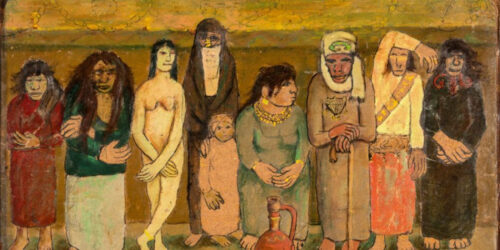
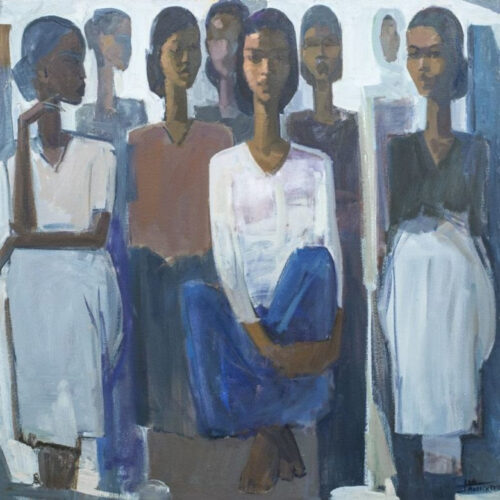

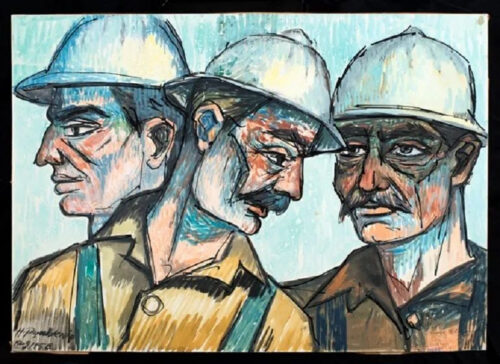
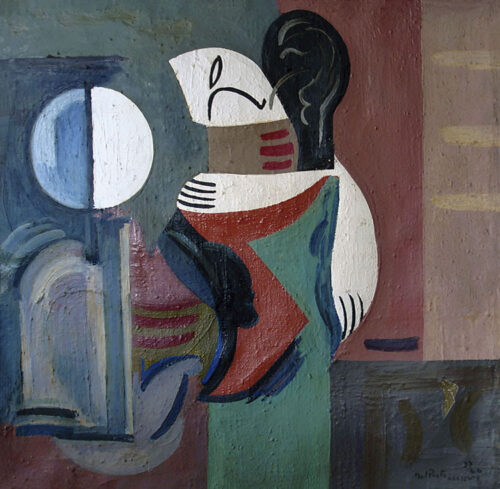

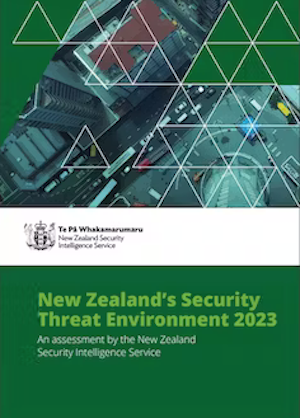




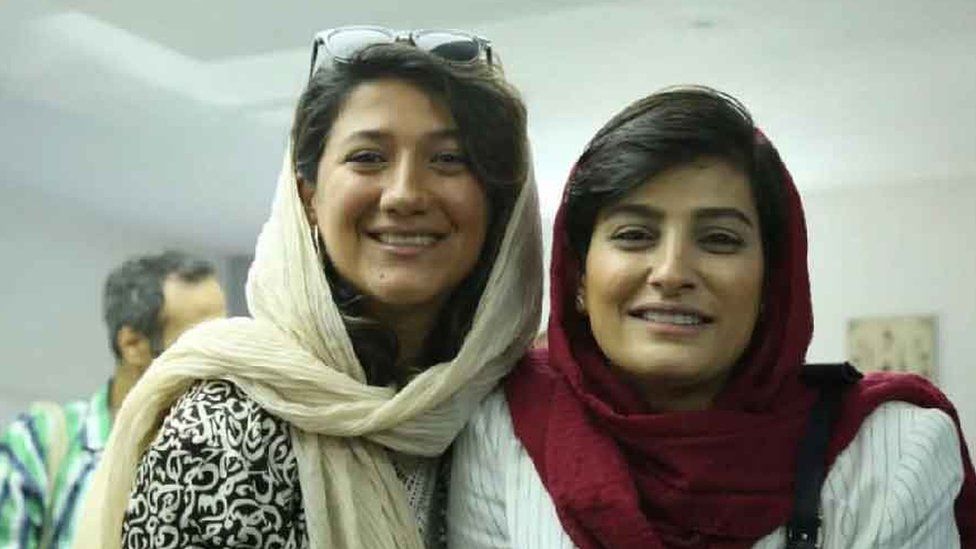


 (@DanielDiMartino)
(@DanielDiMartino) 